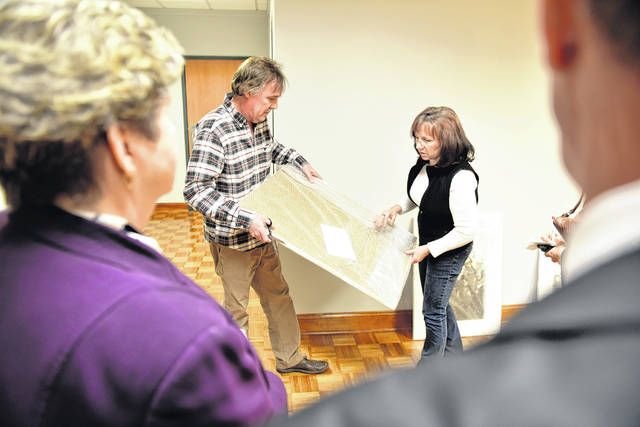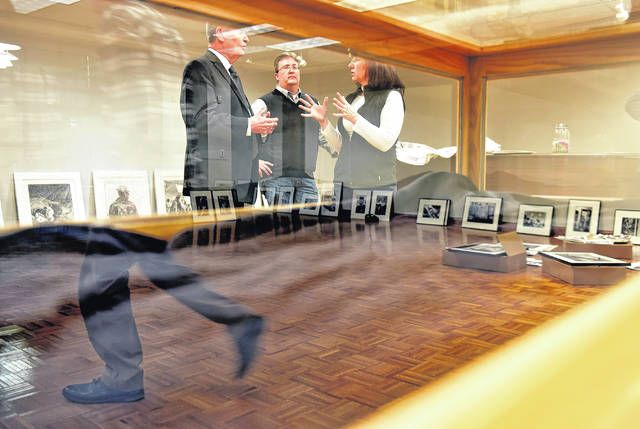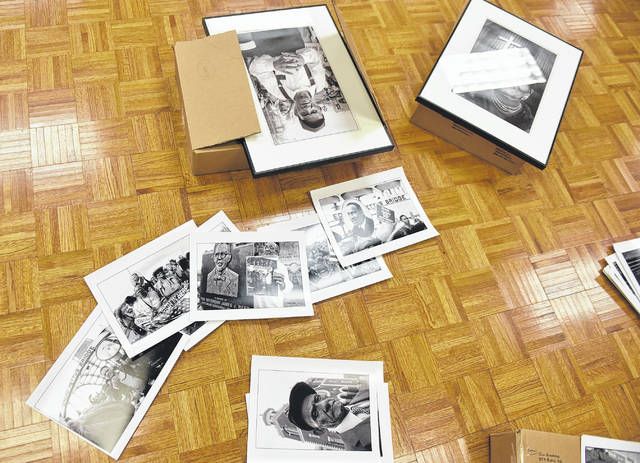Click here to subscribe today or Login.
NANTICOKE — “I went to jail for five days.”
“I was a participant with great hopes for success.”
“I was 17 years old. Now I’m 53, praise the Lord.”
“I will never, never forget.”
Concise and poignant, the messages were written on tiny squares of paper by the “foot soldiers” who faced brutal beatings and imprisonment as they peacefully set out on a 50-mile march for voting rights in Alabama half a century ago.
Pulling a small stack of these “I Was There” notes from a manila envelope last week, photographer Jim Gavenus handled them reverently as he pondered how best to display them in “Selma to Montgomery: A March for the Right to Vote.”
The exhibit, set for Jan. 19 to Feb. 21 in the Schulman Gallery at Luzerne County Community College, where Gavenus teaches photography, will contain artifacts from the civil rights movement — including a billy club and cattle prod once used against the marchers — as well as photographs the late James “Spider” Martin shot in 1965 and others Gavenus shot over his past 15 years of visits to Alabama.
“Some people told me they were arrested 40 times,” Gavenus said. “They’d go and march and be beaten, and then they’d go back to face it all again.”
“It’s a story that needs to be told, about an ugly period in American history,” gallery director Wanda Riley said as she helped Gavenus unwrap a shipment of Martin’s photographs, which Martin’s daughter, Tracy, arranged to loan to the Schulman exhibit.
Martin’s work, which he produced as a photographer for the Birmingham News, brought the brutality with which state troopers greeted the marchers to the attention of the world through such images as a picture of activist Amelia Boynton, barely able to stand, being helped from the scene where she’d been beaten unconscious.
Other striking Spider Martin photos the Schulman Gallery will display show African-Americans kneeling in prayer, white state troopers holding clubs, and a close-up view of a pair of bandaged feet.
“This is Mr. F.D. Reese,” Gavenus said, pointing to a photo of a man marching hand-in-hand with Dr. Martin Luther King Jr.’s wife, Coretta Scott King. “He still lives in Selma, and the folder he’s carrying has Dr. King’s ‘How Long, Not Long’ speech inside it.”
Pointing to a photograph of a white man from Michigan named Jim Letherer, who took part in the march on crutches because he had lost a leg to cancer as a small child, Gavenus said he’d been told the amputee suggested to a young black girl who had previously been beaten that she walk beside him. “He said if anybody tried to hurt her again, they’d have to kill him first,” Gavenus said.
Children were beaten on the day known infamously as “Bloody Sunday,” Gavenus said, recalling how activist Lynda Lowery, who was in her early teens in 1965, has told him she still has scars on her head.
“She’s told me that today, when there’s a tragedy, counselors come to schools to help children understand,” Gavenus said. “Back then, they didn’t have any counselors.”
Many people today know little or nothing about the civil rights movement, and the suffering of people who advocated for the right to vote, LCCC president Thomas P. Leary said as he stopped by the gallery. “We’re grateful we have the opportunity to bring this exhibit not just to our students but to the community.”
The public is welcome to attend the exhibit, Riley said, adding that when the date is confirmed, the school will announce a teleconference with civil rights foot soldiers that will be held in conjunction with the exhibit.
Another event LCCC will hold in honor of Black History Month will be a multi-media program call “Let Freedom Sing,” set for 11 a.m. Jan. 23 in the second-floor student lounge of the college’s Campus Center.
As he sorted through exhibit items, Gavenus said he is overwhelmed by the courage and tenacity of the activists who stood up for the right to vote. Even after the marches were over, he said, they often faced a barrage of unfair tests when they tried to register to vote. “Literacy tests” contained such questions as “If the two houses of congress agree on adjournment, who sets the time?” and “The constitution limits the size of the District of Columbia to (fill in the blank).”
Even if someone were to correctly provide all the obscure answers, Gavenus said, an official might subsequently ask them to guess how many jelly beans were in a jar. Or how many bubbles were in a bar of soap.
Nobody knows those answers, Gavenus said. But the foot soldiers didn’t give up.








